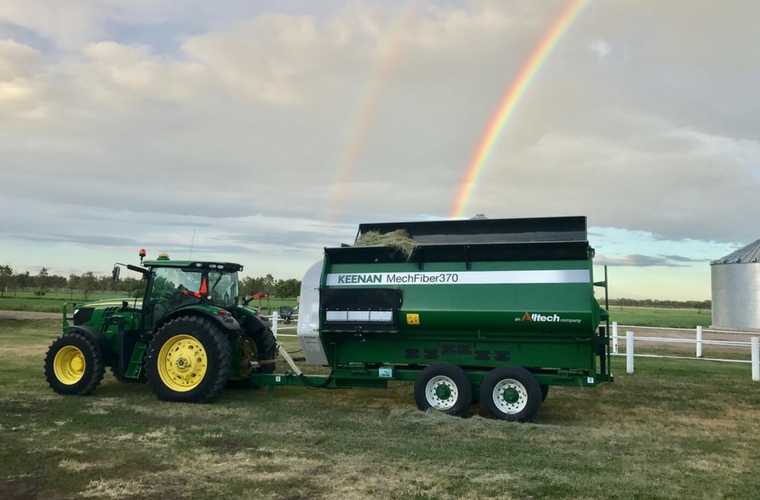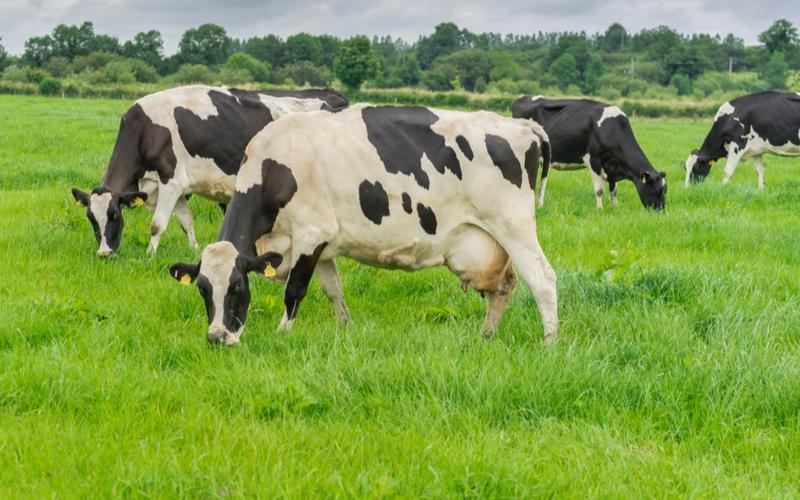Pearse and Deirdre Lyons could not have known when they met decades ago as teens at a Dublin rugby club dance that they would one day find themselves driving around the streets of a section of the Irish capital known as the Liberties in search of just the right place to house their legacy.
This quest was not about Alltech, the global animal health and nutrition company they had founded and nurtured to remarkable success. This was personal.
The story, one animated by shared imagination and powerful determination to overcome all manner of obstacles, is expressed in the location, history and reincarnation of a deconsecrated church that had known better days.
And who better to relate the story of Pearse Lyons Distillery at St. James than the Lyonses themselves?

Photo Credit: Conor McCabe Photography Ltd
Locating their legacy
Pearse recalled the day he and his wife Deirdre explored the Liberties district, one of Dublin’s most historic neighborhoods that had once hosted dozens of breweries and distilleries.
“I wanted something in Dublin, and I wanted something that would be close to Guinness for the simple reason that 1.6 million people visit Guinness every year,” he explained. “I’m a businessman, and I thought, ‘Okay, I need someplace close to the 1.6 million people.’ So I was looking in that vicinity.”
“It just so happened that we were driving down James’s Street,” said Deirdre. “This is the area where Pearse’s father and grandfather and his grandfather before him all grew up. Pearse's very first job was at Irish Distillers, which was, at that time Paddy, Powers and Jameson whiskey.”
They came upon St. James, a church that had been built before the signing of the Magna Carta. In the last century, it had been repurposed as a warehouse and a store, but it was sitting abandoned.
Pearse saw past its state of disrepair and envisioned the opportunity as real estate just steps away from Guinness.
He bought it.
Was there hope in this forsaken place?
“My first thought was, ‘Oh, no!’” said Deirdre. “When we walked in, I couldn’t believe it.”
It was bad. Very bad.

“The roof was leaking in many places,” she said. “We had all kinds of water damage, plaster damage and neglect. The beautiful stone columns that had come from Caen in Normandy were painted magenta. Where the beautiful ceiling is now, previous owners had hacked out the stone on each side and put in steel beams and a staircase for a mezzanine and above that, another mezzanine. All the windows were blocked up with cement blocks, both inside and outside.”
Additionally, they soon discovered that a buddleia, or butterfly bush, had started to grow from the top of the church. It was so powerful that the roots had come down and broken through a wall 9 feet thick.
At this point, many would likely begin having serious second thoughts. The Lyonses instead prepared themselves to move forward with the project.
A new classification creates complications
A major twist in the plot occurred when, only two weeks after the purchase, they were informed that the old church was to become a national monument.
This new designation began a multi-year, multi-million euro excursion through a sea of time-consuming, costly renovation and restoration work.
“We had to remove all of the plaster,” said Deirdre. “We had to then build it back with new plaster, but the new plaster had to be of the 18th century-style. So that meant it had to be a lime plaster with a rough finish.”
Since it can take up to six years for lime plaster to completely dry, a special and very rare silicate paint would be required — and there are only three on the planet.
“One of them happened to be in Ireland!” said Deirdre. “I wanted this warm, buttery yellow, like a glowing ‘wrap itself around you’ feel. The Irish firm had five or six shades of white. So we said no. The next one was in Slovenia. They sent samples that were very yellow. Unfortunately, 48 hours after their paint was tested, it changed color. So we did more research and found a German company called Keim. They do a lot of restoration of historical buildings, particularly with the paints that were used in medieval times, which were very muted colors. That worked perfectly.”
But no sooner had the paint issue been solved then another challenge arose. The old church had long ago lost its spire. So Deirdre turned her attention to its replacement.
“There had been no spire on the church since 1954,” she explained. “It had been struck by lightning, and it became dangerous, so it was taken down.”
Deirdre presented ideas for a new slate, copper or stone spire, but every idea was rejected by city officials.
But, said Pearse, “Deirdre doesn’t compromise. She was going to do something spectacular. She knew what she was doing, and she would not take any shortcuts. It took them a while to realize that this was a woman for whom it wasn’t money; this was a passion.”
Deirdre has a fondness for glass and came up with a concept for a glass spire that could be lighted at night. That idea was rejected.
“I was so frustrated at this point with everything that was rejected that I sought out a meeting with the city officials,” she said. “We shared our drawings, and they found them to be unique and exciting. Since we didn’t hear anything negative, we went ahead and created the spire.”

Deirdre’s vision for the interior called for custom-made stained glass windows decorated with depictions of the brewing, distilling and coopering that had been so characteristic of the Liberties.
“We presented the renders for the stained glass windows, but they were rejected on the premise that it had been a Protestant church, which would not have had stained glass,” she said.
To move forward with the stained glass windows, the Lyonses were invited to prove that they couldn’t be read from the outside of the church. Deirdre took this as a go-ahead to produce one of the windows and install it, since it would be the only way to test it.
“We created the south window first, which explains the brewing process,” said Deirdre. “It took a long time to sketch it and go to the glass company, a little two-person company way up in the north, pick out all the glass and lay the glass the way we wanted — because we wanted to use all of the colors that would be associated with the industry, like gold, amber, copper, some black and some warm browns and yet put them in a way that was very easy to read.”

Photo Credit: Donal Murphy
Once they installed the window, they invited the planners and zoners to come see it.
After opportunity for review, Deirdre decided to proceed to the next window. However, when the concrete blocks were removed, a couple small lattice pieces were discovered. Because the lattice pieces were original, the window could no longer be removed.
“We had to create our window and put it on what I call a ‘goal post frame’ and float it off the window,” said Deirdre.

Photo Credit: Donal Murphy
Classic copper pot stills, custom-made for the distillery by the Vendome Copper & Brass Works in Louisville, Kentucky, were transferred from their County Carlow location to the site. With the attempted move, an entirely new round of frustration gripped the project.
“We were a quarter of an inch shy of getting them through the biggest door,” said Deirdre. “We could take the door off, but we couldn’t remove the arch because we were afraid that the stone would not be able to support itself.”
But, where there’s a will, there’s a way. Workers were in the process of reinforcing and replacing the building’s roof.
“We got everything structurally right and then we left one section of the roof open,” said Deirdre. “We had a crane lift them in.”

Photo Credit: Donal Murphy
A legacy project becomes an ancestral tribute
Excavation to make room for the building’s new mechanical systems yielded yet another surprise. This one, at least, brought with it a most amazing serendipity.
“We soon unearthed bodies that we hadn’t expected at all,” said Deirdre. “In those days, graves were dug very deeply, and bodies were placed on top of bodies.”
An on-site archeologist oversaw a careful process each time a body was discovered. Each one was carefully taken to the National Museum of Ireland – Archaeology, where it was examined, dated and photographed. The bones would then be returned to rest at St. James.

“To accommodate all those bones, we actually had to create crypts under the floor of the church,” said Deirdre. “There were two crypts already in the church, but we had to put in five more.”
Then, there was a startling discovery.
Among those buried in the centuries-old church graveyard was none other than John Hubert Lyons, grandfather of Pearse.
The revelation unlocked something long hidden in the recesses of his memory.
“At age 4, my earliest recollection is of going to a funeral, an Irish wake,” he explained. “I saw this person, and I remember them saying it was my grandfather.”
The year was 1948.
“His parents were on holiday in France and had distributed all of the little ones to various aunts and uncles in the area,” related Deirdre. “So, Pearse and his older brother were taken in a horse-drawn carriage with the hearse. But he never knew that it was a funeral until he grew up. He was too young. It was hushed up. It all flooded back when we realized this. That then made it very important to Pearse.”

This personal commitment would prove critical as myriad obstacles continued to mount. For example, the Lyonses would present 17 renderings of a proposed visitors center before a plan would finally be approved.
Breathing life into the Liberties

Pearse hopes the beautifully restored distillery’s presence and energy breathes new life into the neighborhood.
“When you put a beautiful place up, people tend to step up,” said Pearse. “There are going to be a lot of refurbishments. I hope we’re alive to see it.”
“I have to say that, even though it was probably the most challenging job I’ve ever done, it’s also been the most rewarding,” said Deirdre as she reflected.
“The builders said that they loved working with Deirdre because she never changed her mind. Never,” said Pearse. “She has the vision of what she wants to do. I think this is what makes us a formidable team. It’s telling our story. It’s history.”































